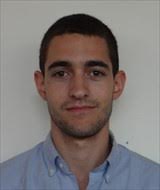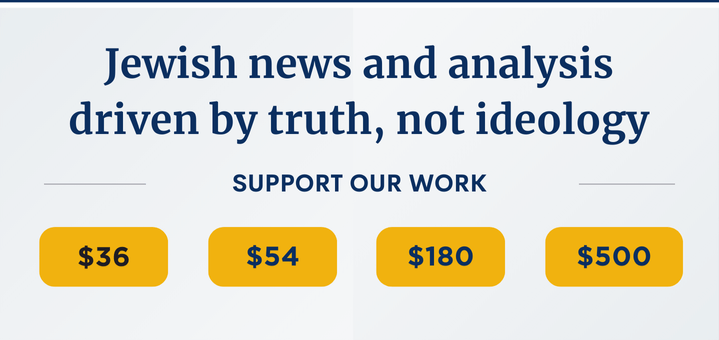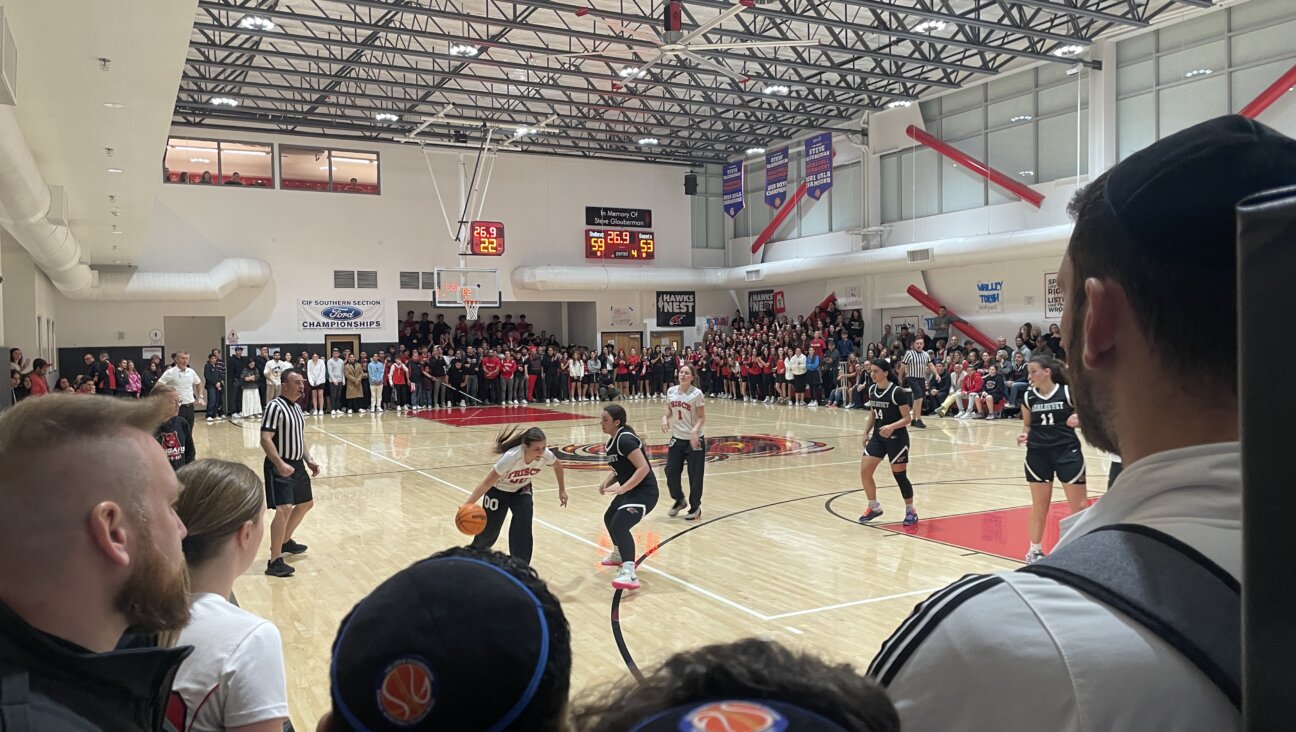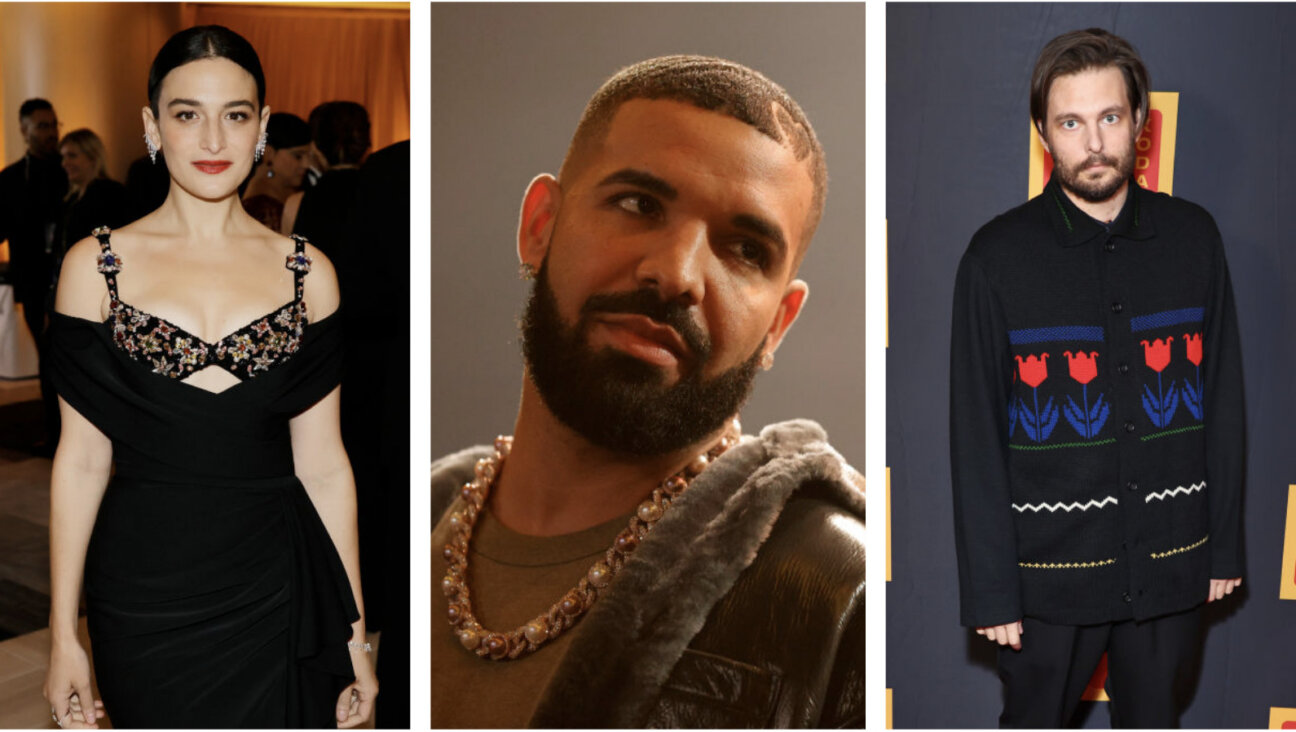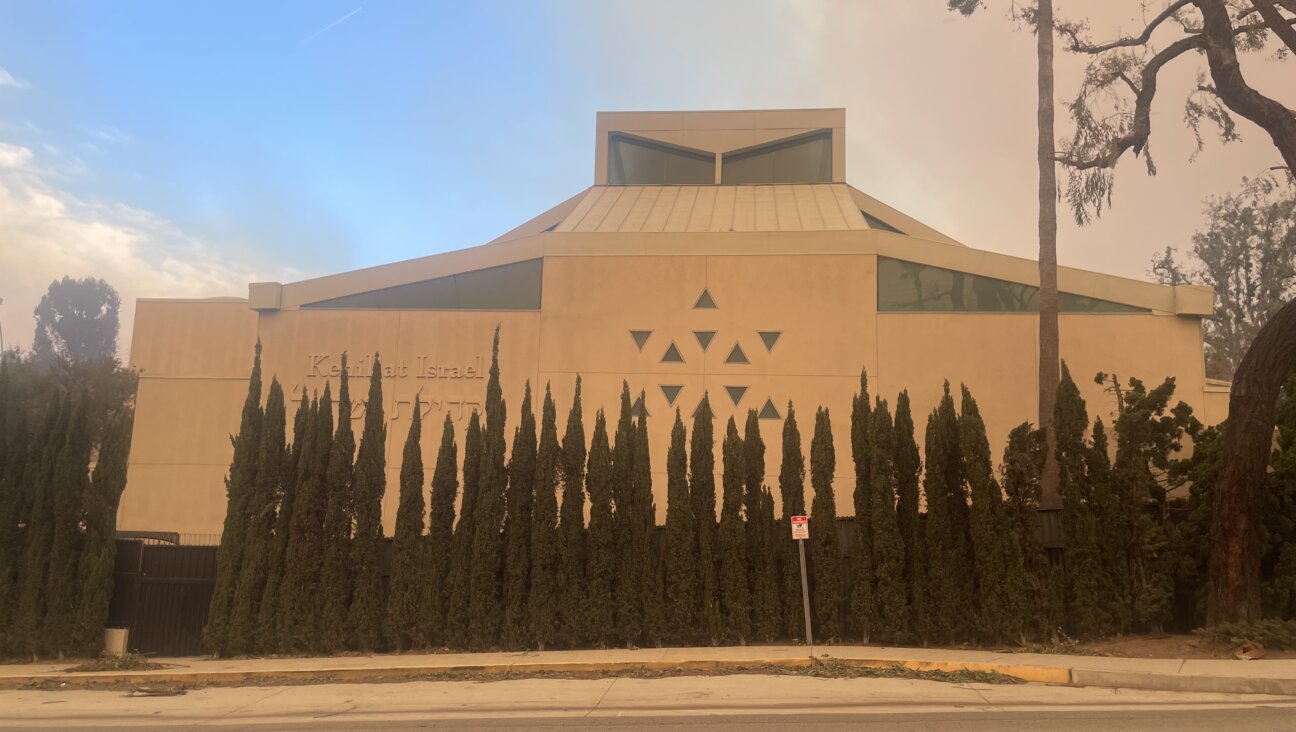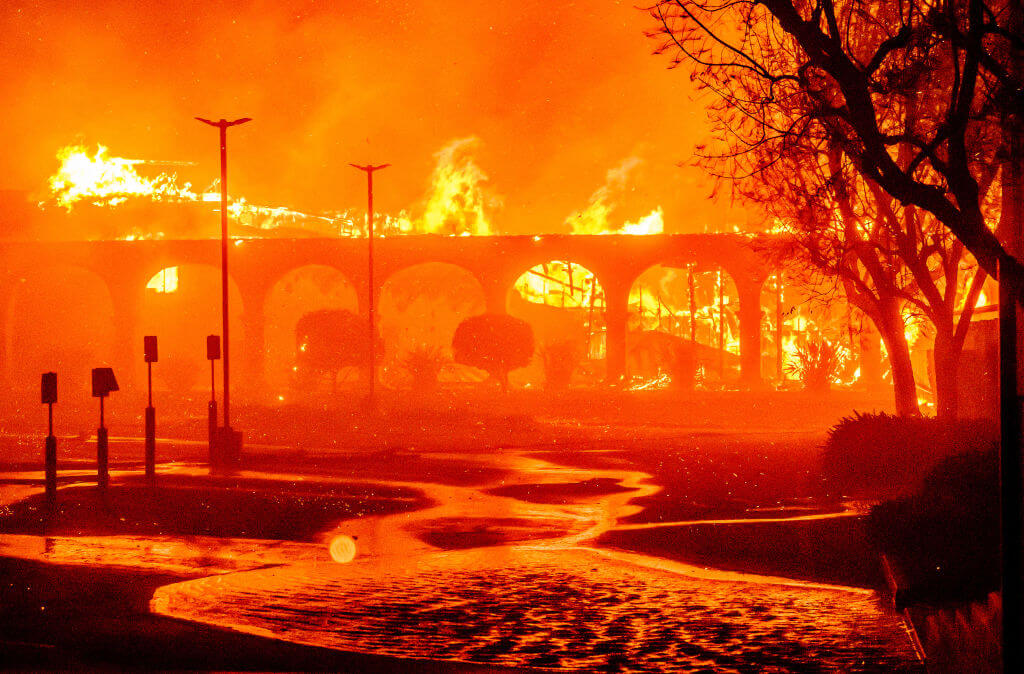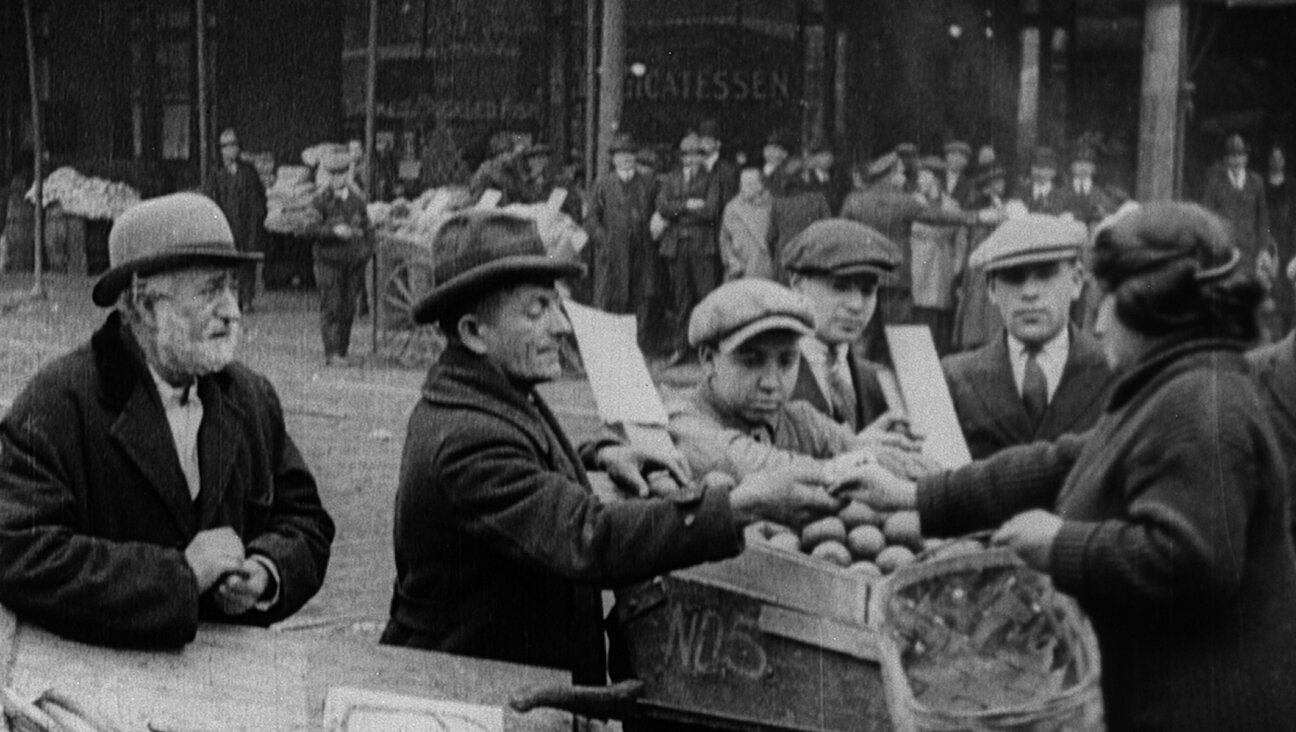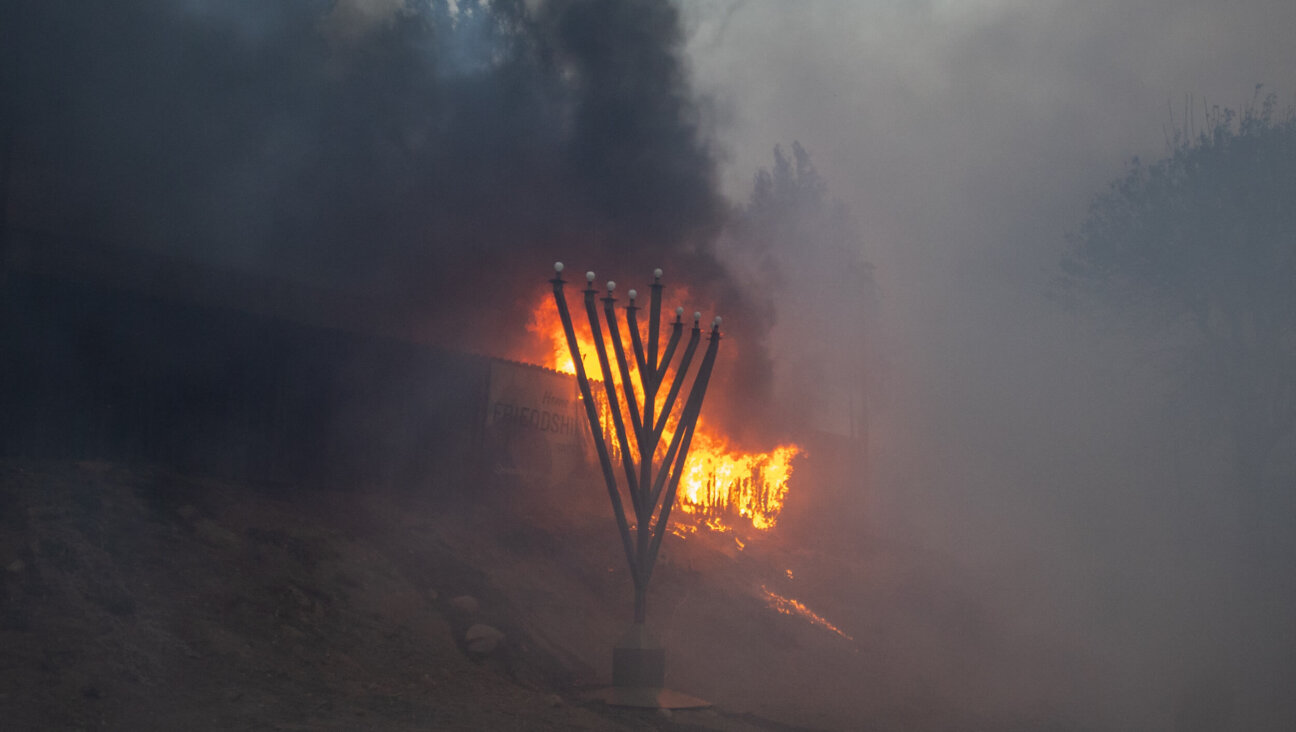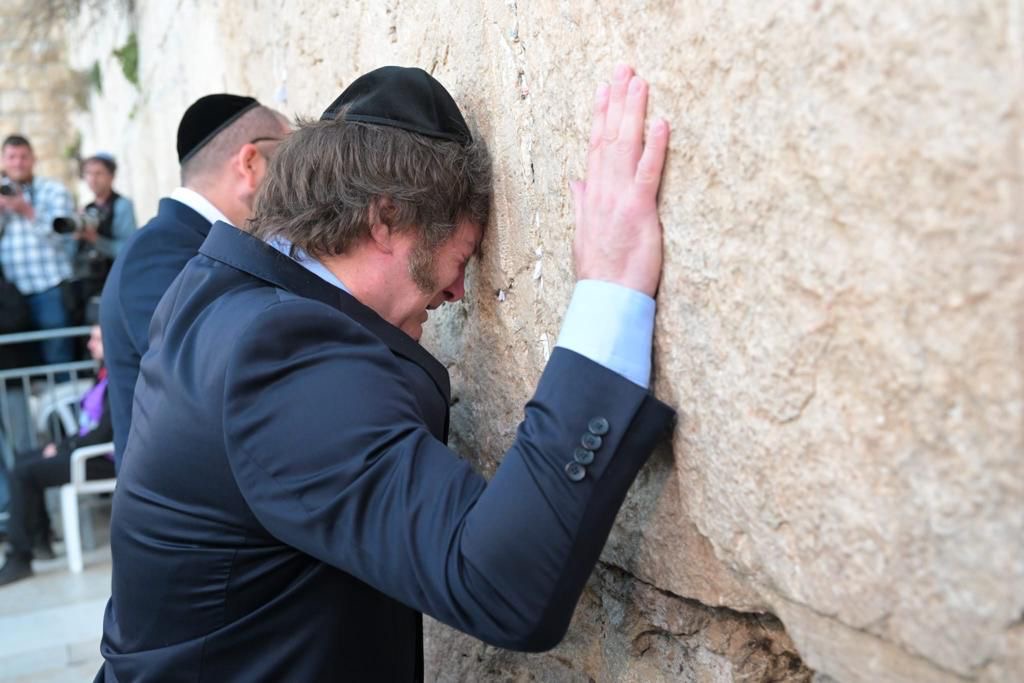California Briefing: Special report on the Pico-Robertson shootings
Did it take a second shooting for LAPD to take the threat seriously?
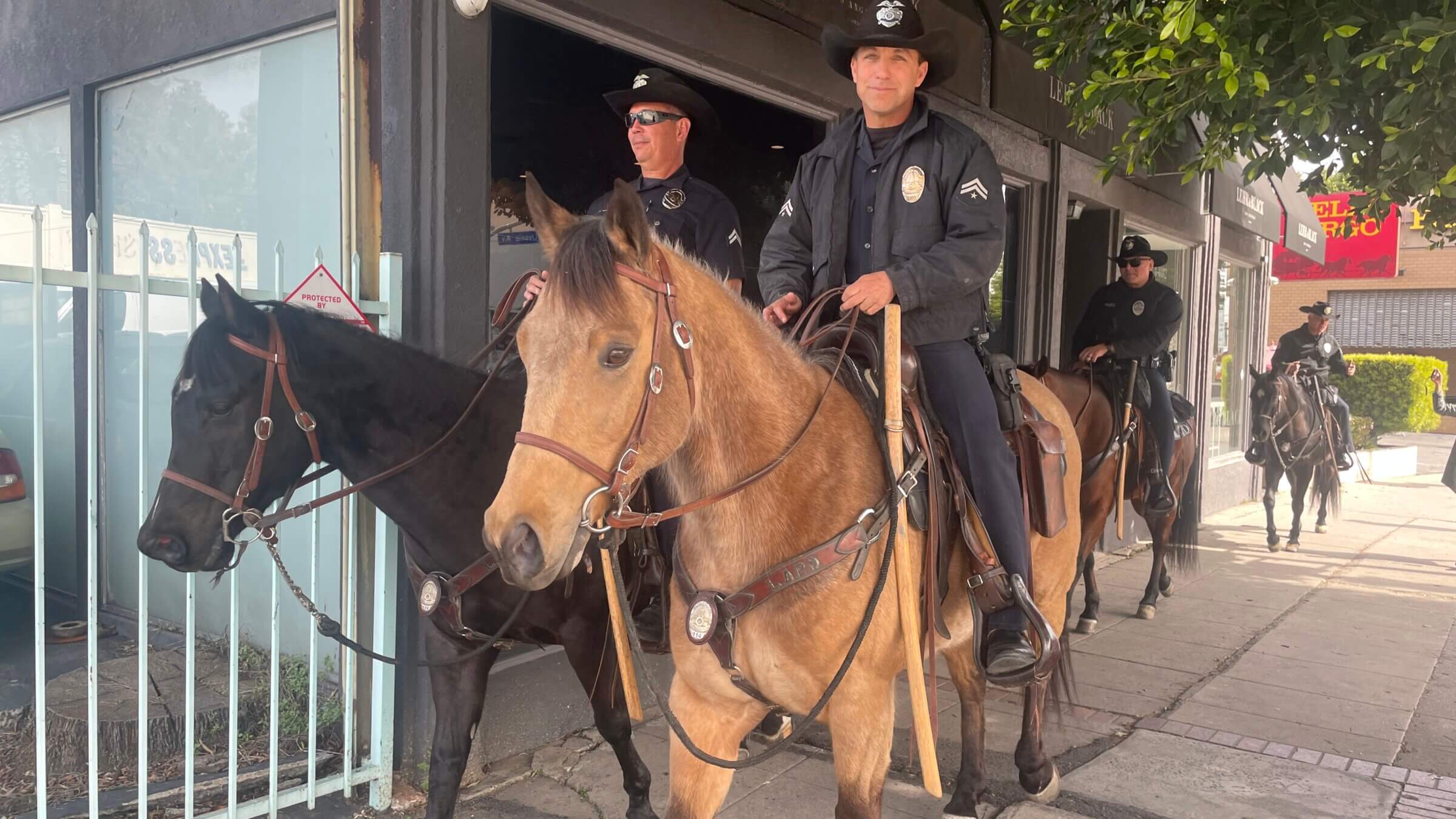
LAPD officers patrol on horseback in Pico-Robertson on Feb. 17. Photo by Louis Keene
Welcome to the California Briefing, the weekly dispatch of California Jewish links by Louis Keene. In this edition: A special report on the attack on the Orthodox Jewish community in Los Angeles.
To get the latest on pop culture, politics and Jewish life in the Golden State in your inbox every Thursday, subscribe here: forward.com/california.
Three big takeaways from the attack on Pico-Robertson
They caught the bad guy less than two hours after last week’s newsletter went out, but I’ve been thinking a lot about the two Pico-Robertson shootings since they happened, and a few things continue to sit with me — and maybe with you too. I’ll lay them out here and invite you to weigh in with your thoughts.
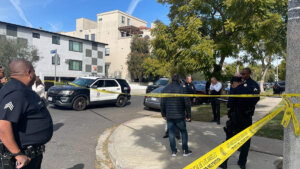
1. What authorities told the community while the suspect was loose conflicts with what they said after the fact — and what they knew at the time.
The shootings on Wednesday and Thursday occurred about 22 hours and three blocks apart. It was one thing to say after the first shooting, as authorities and the Federation did, that there was no threat to the community. After the second incident — with either one or two shooters on the loose — to say that there was no threat, and that the incidents were unrelated, strained credulity.
And yet that’s exactly what law enforcement said Wednesday morning, and reiterated again in the afternoon. It told the community these things despite reviewing evidence at the scene of the crime Thursday morning — according to court documents, an officer photographed the suspect’s gray Honda at the scene — that seemed to confirm that the two shooters were the same person.
“These two shooting incidents are certainly concerning but they are not believed to be related,” Craig Heredia, commanding officer of the West LA division, wrote in a statement Thursday morning. “There was no indication of yesterday’s shooting being motivated by hate.”
And on Monday, at a town hall for concerned members of the community (more on this later), LAPD Chief Michel Moore said the department had begun investigating the first shooting as a hate crime. So which is it?

More importantly: Why, with a shooter on the loose, did the police continue to insist until after 5 p.m. on Thursday of his spree — by which time many in the community had walked to services more than once — that the incidents were unrelated? And when it did announce it was one suspect, why did it misidentify what car it was tracking (it was no longer a gray Honda, as we were told on Wednesday, but a “white sedan”)? Imagine seeing an empty white sedan parked outside your shul that night (or driving yours there)!
My feeling, which no one in LAPD would confirm, is that the department knew not long after the shooting on Thursday not only who the suspect was, but where he was, and it wanted to avoid tipping off the suspect that it was onto him. But I can’t think of a reason the police department needed to insist, falsely, that the events were definitely unrelated until right before the arrest.
Asked why the department insisted on no connection when it knew there was, Captain Heredia told me Monday night that if he had a do-over, he would tell the public that there was “no known nexus” between the incidents rather than assert no nexus outright. That still would not have been the truth! But it would have been further from a lie.
I’m also not sure the public has received accurate information after the fact. Again, Chief Moore said the department began investigating the first shooting as a hate crime. But considering the tools that were used to find the suspect — cell phone tracking and license plate reading, according to the criminal complaint — and the fact that he was found with his car and (likely) his cell phone, why did it take nearly 30 hours to find him? Was the crime being taken seriously after the first shooting, or only the second?
My feeling is that this was only regarded as an antisemitic attack after the second shooting. Here’s why: On Wednesday, when I arrived at the scene of the shooting less than three hours after the fact, there was no sign police had ever been there. And there were no promises of just-in-case increased police presence afterward. (A police spokesperson even told me that not only was the FBI not involved after the Wednesday shooting, his guess was that it had resulted from a drug deal gone bad.) But on Thursday, the scene was totally different. There were several blocks cordoned off for more than four hours after the shooting, and a couple dozen cops on the scene. Authorities made an arrest about 9 hours later.
Could law enforcement have prevented Guy Taiem from being shot if it had taken the first shooting as seriously as it did the second? We’ll never know. But we should probably be asking bigger questions of the Federation before we approve a taxpayer-funded expansion of its Community Security Initiative, as Councilwoman Katy Young Yaroslavsky proposed Tuesday in City Hall. All CSI seems to have done in this case is tell people what the cops told them — which in this case, was deliberately misleading.

2. What the Jewish Federation’s town hall event with Mayor Karen Bass was missing
It was encouraging to see politicians from every level of government and law enforcement rally to support the Jewish community as quickly as they did, and I credit Mayor Bass and the Federation for pulling it together. With about 300 members of the Jewish community in attendance, the event could have enabled people to get answers about the actual chronology of the investigation, discuss the difficulty of protecting people walking to and from synagogue, or brainstorm actions against the “free speech” antisemites whose influence seems to be growing.
But the Q&A that followed the grandstanding went through spokespersons (from what organization was unclear), who seemed to pick the friendliest and least consequential questions. (Example: How can we educate our children about the threats of antisemitism?) And as I noted in my Twitter thread on the event, despite the shooter deliberately targeting Persian Jews and his victims being Persian and French-Moroccan, the three rabbis who spoke from the podium were all Ashkenaz. That brings me to takeaway number three:
3. The atomization of Pico-Robertson

The shootings may have occurred in close geographical proximity, but the victims were leaving morning prayer services in very different Orthodox micro-communities — and it’s not a coincidence that one of those services was held in a rabbi’s home. Small, home-based minyamin (not shivas) have proliferated during the pandemic. Most only meet on Shabbat, but they show no signs of fading or consolidation, and only God knows how many there are. The Big Shul paradigm, in which most of the community’s interests are represented by a few major institutions and their leaders, is long gone. And so different people in the community may have completely different reactions to the shootings because their cultural proximity to the victims ranges wildly.
That’s why the Federation event seemed more to me like a carousel of applause lines than a productive session. It’s possible that the events hadn’t sunk in yet, or that because no one was killed or even seriously hurt, it was hard to address the reality of the situation. But it’s also possible — especially considering the absence of major Sephardic leaders from the dais — that both the speakers and the audience at the Bass town hall represented a different segment of Pico-Robertson from the ones victimized by the shooting. The shootings happened east of Robertson Boulevard, a less-wealthy area of apartment complexes and immigrant families — where people walk to and from shul on weekdays, too.
On another level, though, no matter how much we grow apart, everyone who ever walks to shul is affected the same way by attacks like this. Which is why we should all be pushing for more answers from the police and the Federation — which reinforced LAPD’s false assurances to the community — about both what happened and what needs to change.
Email me your thoughts: [email protected]. And thanks for reading the Forward.
What we’re reading and watching this week
? Last week we reported the story of a swastika at LACMA. Well, the story gets stranger: the vandal contacted the student newspaper that covered the incident to say it was actually a kinetic art piece protesting Iranian fascism. See video above!
? Transatlantic, a new miniseries from the creator of Unorthodox about a daring Holocaust rescue, is coming to Netflix in April. (No, this doesn’t make up for You People.)
? After negging the Golden State for the first six months of his tour, standup comic Sam Morril is finally coming to California. He’ll be performing in San Diego on April 20, Los Angeles April 21, Sacramento April 22 and San Francisco April 23. I’m going to the April 20 show, so if you’ll be there, come say hi!
✊ Neo-Nazis rallied outside the first preview performance of Ben Platt’s Parade revival this week. It’s a good opportunity for anyone (including me!) to learn more about Leo Frank, whom the play is about.

? David Cross, about to embark on a standup tour, told Salon he has killed material when it’s offended fans. Meanwhile, Netflix is removing all of Arrested Development, the show Cross is most famous for, from the streaming service.
? The Forward interviewed venerated crime author Walter Mosley — who has a new book forthcoming — about his Jewish upbringing in LA, the question of Jews and whiteness, and his place in the pantheon of Jewish authors.
? Students at an East Bay high school were given antisemitic conspiracy material by their English teacher, J. reports. Meanwhile, the teacher seems to have posted about the same movie Kyrie Irving shared last year.
Your humble correspondents
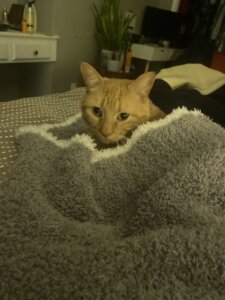
I wrote about the alleged Pico-Roberston shooter’s apparent belief that a Persian Jew in his dental school class was the literal origin of the coronavirus pandemic. On the other side of the country, I spoke to a Chabad rabbi whose community has been harassed by neo-Nazis. And Rob Eshman wonders, Was I wrong about antisemitism?
Finally, in the we-are-so-lucky-to-live-in-
At the aforementioned town hall, a valet took my ’98 Bimmer and rolled down the window, and of course now it won’t roll back up. That shouldn’t be an issue, considering we live in California and it never rains here. But — of course — this week promises a blizzard? But if it snows in LA, and snows gets in my car, I won’t even be mad. I will have driven out of my partially covered parking space to experience it.
A message from our Publisher & CEO Rachel Fishman Feddersen

I hope you appreciated this article. Before you go, I’d like to ask you to please support the Forward’s award-winning, nonprofit journalism so that we can be prepared for whatever news 2025 brings.
At a time when other newsrooms are closing or cutting back, the Forward has removed its paywall and invested additional resources to report on the ground from Israel and around the U.S. on the impact of the war, rising antisemitism and polarized discourse.
Readers like you make it all possible. Support our work by becoming a Forward Member and connect with our journalism and your community.
— Rachel Fishman Feddersen, Publisher and CEO



